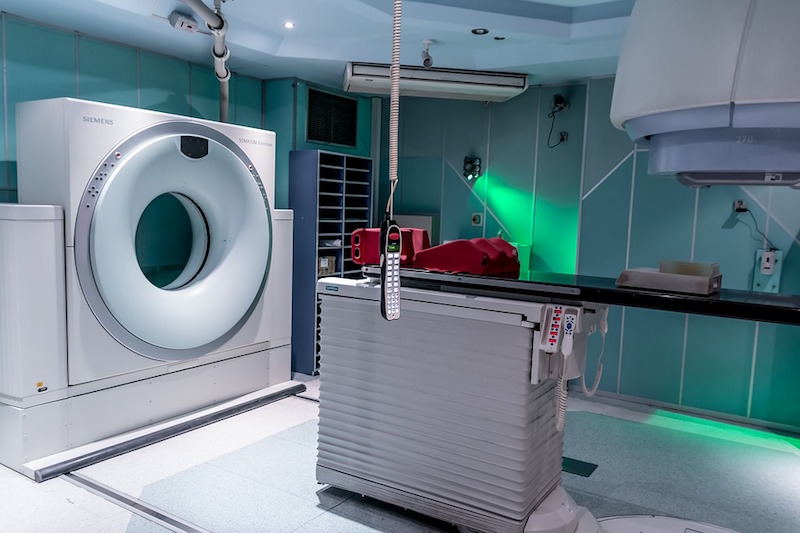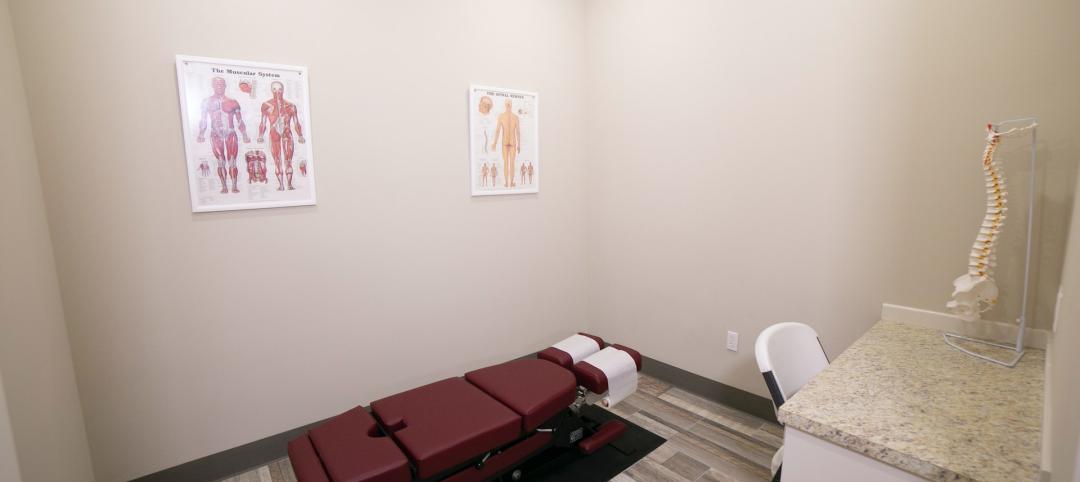E4H Environments for Health Architecture, an architecture firm focused exclusively on healthcare, recently released seven predictions for healthcare facility design trends in 2018.
“From Emergency Departments to micro-hospitals, to the amenities in and locations of hospitals, the year ahead will see continued changes in how healthcare providers are designing and equipping their facilities to meet both patient and market needs,” said Jason Carney, AIA, E4H Partner, in a release. “Add in the pressures of rapidly evolving regulations and payment models, and healthcare design has never been more dynamic than it is now.”
Following are seven top design trends in healthcare for 2018, as envisioned by E4H partners from across the country:
Behavioral Health Drives Emergency Department Reconfigurations
Reflecting both the national opioid-abuse crisis and rising awareness of mental health conditions, hospitals are recognizing an intense need to accommodate cognitively impaired patients more effectively and more sensitively. Hospital leaders are seeking a careful balance in separating patients who pose a risk to themselves and others from the general Emergency Department (ED) population, while ensuring all patients are treated with compassion and dignity. At facilities such as Connecticut’s Waterbury Hospital and Newport Hospital in Rhode Island, areas within the ED are being designed for people and families who are experiencing or approaching a crisis requiring behavioral-health or addiction-management intervention. Because patients with cognitive impairment and behavioral issues often require longer stays in the ED than the general population, an emerging best design practice is adding features for them such as bathroom showers, places to securely store belongings, and access to decompression space.
Virtual Reality Becomes a Critical Planning Tool for Hospital Design
In 2018, more healthcare clients will benefit from virtual reality (VR) technology as they partner with architects to imagine and design complex spaces like operating rooms. VR technology is becoming smaller and more mobile, enabling architects to take VR equipment directly to end users in order to harvest their insight interactively and obtain immediate design feedback. The ability to use VR goggles and headsets to visualize space in three dimensions and coordinate both the room design and placement of equipment is improving facility efficiency and safety. VR headset technology breaks through the traditional limitations of a screen to put people “in” the design to experience, evaluate, and comment on everything from casework configurations to outlet quantities and furniture arrangements.
Microhospitals
According to US News & World Report, microhospitals are now operational in 19 states across the U.S., providing services similar to larger hospitals (ED, pharmacy, lab, radiology, and surgery) in a smaller envelope. This model offers greater accessibility and convenience for residents and is a cost-effective market growth strategy for providers. These mini-hospitals are roughly 15,000 to 50,000 square feet, open 24/7, and maintain between five and 15 inpatient beds for observation and short stay use. Recent changes to Centers for Medicare and Medicaid Services policy regarding reimbursement schedules for satellite facilities, authorizing microhospitals with dedicated emergency departments as eligible for both 340B discounted drug pricing and the Outpatient Prospective Payment System, will make microhospitals an increasingly popular option. E4H Architecture has designed 28 micro-hospitals in Arizona, Colorado, Texas, Louisiana, and Ohio.
Make Space for Telehealth
Both for patients at home and those in medical facilities, telehealth is an increasingly integral mode of healthcare delivery. Healthcare consulting firm Sg2 projects that in the next two years, the volume of virtual healthcare patients will rise 7 percent and in-home healthcare services will rise 13 percent. Installation of sophisticated patient monitors with robust communications platforms is enabling patients to consult seamlessly with physicians and care team professionals. Increasingly, telehealth is being utilized for specialty services like radiology, psychiatry, and dermatology as a way to obtain a specialist’s opinion without the inconvenience of an additional office or hospital visit. Healthcare facilities should start thinking now about how to best incorporate telehealth services into their master plan. Telehealth affects facility design in several ways, including how treatment rooms are configured to accommodate remote consultation and providing infrastructure for the technological equipment. Lighting, privacy, and aesthetics of rooms used for confidential telehealth consultations are all important concerns that need to be addressed by architects and designers. Telehealth technology is also transforming lobbies, common spaces, and admissions areas. Increasingly these areas are being designed to include accessible areas for kiosks or tablets from which patients can register, view their records, or videoconference with a provider.
Hospitals Take a Cue from the Hospitality Industry
The healthcare industry is embracing the trend of removing out-patient services from traditional, larger hospitals and moving them to more consumer-friendly environments. In some cases, this trend has been shown to create operational efficiencies and improve clinical outcomes, such as decreased re-admittance rates. E4H recently worked with a New York hospital to convert a 27-unit physician and nurse dormitory into temporary housing for immunocompromised patients. Procedures like bone-marrow transplants (BMTs) exemplify a unique need for extended care: In the first phase of treatment (surgery and post-op), those undergoing BMTs must be served as hospital inpatients. In the second phase, patients are vulnerable to infection and require monitoring for complications, but typically do not require a full suite of hospital inpatient services. For this second phase, the New York hospital administrators worked with architects to serve this “in-between” population, providing a facility that feels more like a hotel than hospital, with cozier interior design; private, suite-style rooms; and specialized air and water filtration systems to protect immune-suppressed patients. Rather than an inpatient charge nurse, a uniquely skilled concierge service provides front-desk response to at the front desk of the patients’ daily needs.
Move to Malls
As the delivery of healthcare continues to improve, an increasing number of same-day services and procedures may be performed outside hospitals, in community locations chosen for ease of access and improved customer convenience. Established retail locations are and will become even more attractive to developers of microhospitals, outpatient imaging, urgent care and ambulatory surgery centers, and medical office buildings. This approach serves not only convenience-minded patients but also providers interested in growing market share. Trends that Walmart and Panera consider for their locations–demographics, quality of highway or transit access, parking– all translate to healthcare as well. In Kingston, NY, E4H is helping Health Quest to transform a former Macy’s retail space into a new state-of-the-art outpatient medical services facility. It will enable consumers to access urgent care, ambulatory surgical care, primary care, diagnostic imaging, and oncology services in an easy-to-reach location.
Acute Care Needs Continue to Grow
In 2018, we will continue to see healthcare services moving from inpatient to outpatient facilities, but hospitals will also see growth in patient-day numbers. As Baby Boomers age, 10,000 Americans will turn 65 every day for the next 20 years, and the total demand for inpatient care will only grow. Additionally, as services are pushed to outpatient facilities, remaining inpatients will increasingly be the sickest and most acute, requiring longer stays. Maximizing the efficiency of space and movement of medical staff to serve this inpatient population, including with more private rooms and fewer shared rooms, is critical to healthcare facility design. In the last two years E4H has designed new private, room bed towers at the Heart Hospital at Baylor Plano, Eastern Maine Medical Center, and University of Vermont Medical Center.
Related Stories
Healthcare Facilities | Dec 20, 2022
4 triage design innovations for shorter wait times
Perkins and Will shares a nurse's insights on triage design, and how to help emergency departments make the most of their resources.
Healthcare Facilities | Dec 20, 2022
Designing for a first-in-the-world proton therapy cancer treatment system
Gresham Smith begins designing four proton therapy vaults for a Flint, Mich., medical center.
Cladding and Facade Systems | Dec 20, 2022
Acoustic design considerations at the building envelope
Acentech's Ben Markham identifies the primary concerns with acoustic performance at the building envelope and offers proven solutions for mitigating acoustic issues.
Sponsored | Resiliency | Dec 14, 2022
Flood protection: What building owners need to know to protect their properties
This course from Walter P Moore examines numerous flood protection approaches and building owner needs before delving into the flood protection process. Determining the flood resilience of a property can provide a good understanding of risk associated costs.
Healthcare Facilities | Dec 14, 2022
In Flint, Mich., a new health center brings together children’s mental and physical health services
Families with children who experience behavioral health issues often have to travel to multiple care facilities to see multiple teams of specialists. In Flint, Mich., the new Center for Children’s Integrated Services at Genesee Health System (GHS), a public mental health provider, brings together all of the GHS children’s programs, including its behavioral health programs, under one roof. It provides families a single destination for their children’s mental healthcare.
Adaptive Reuse | Dec 9, 2022
What's old is new: Why you should consider adaptive reuse
While new construction allows for incredible levels of customization, there’s no denying that new buildings can have adverse impacts on the climate, budgets, schedules and even the cultural and historic fabrics of communities.
Healthcare Facilities | Nov 17, 2022
Repetitive, hotel-like design gives wings to rehab hospital chain’s rapid growth
The prototype design for Everest Rehabilitation Hospitals had to be universal enough so it could be replicated to accommodate Everest’s expansion strategy.
Seismic Design | Nov 16, 2022
SPC-4D: 7 reasons California hospital building owners should act now to meet seismic compliance
Seismic compliance with the applicable California building codes is onerous and disruptive for building owners, especially for a building in the heavily regulated sector of healthcare. Owners of older buildings that house acute care services have a big deadline on the horizon—Jan. 1, 2030, the cutoff date to upgrade their buildings to SPC-4D.
BAS and Security | Oct 19, 2022
The biggest cybersecurity threats in commercial real estate, and how to mitigate them
Coleman Wolf, Senior Security Systems Consultant with global engineering firm ESD, outlines the top-three cybersecurity threats to commercial and institutional building owners and property managers, and offers advice on how to deter and defend against hackers.
Giants 400 | Oct 6, 2022
Top 60 Medical Office Building Contractors + CM Firms for 2022
PCL Construction, Adolfson & Peterson, Swinerton, and Skanska USA top the ranking of the nation's largest medical office building (MOB) contractors and construction management (CM) firms for 2022, as reported in Building Design+Construction's 2022 Giants 400 Report.
















